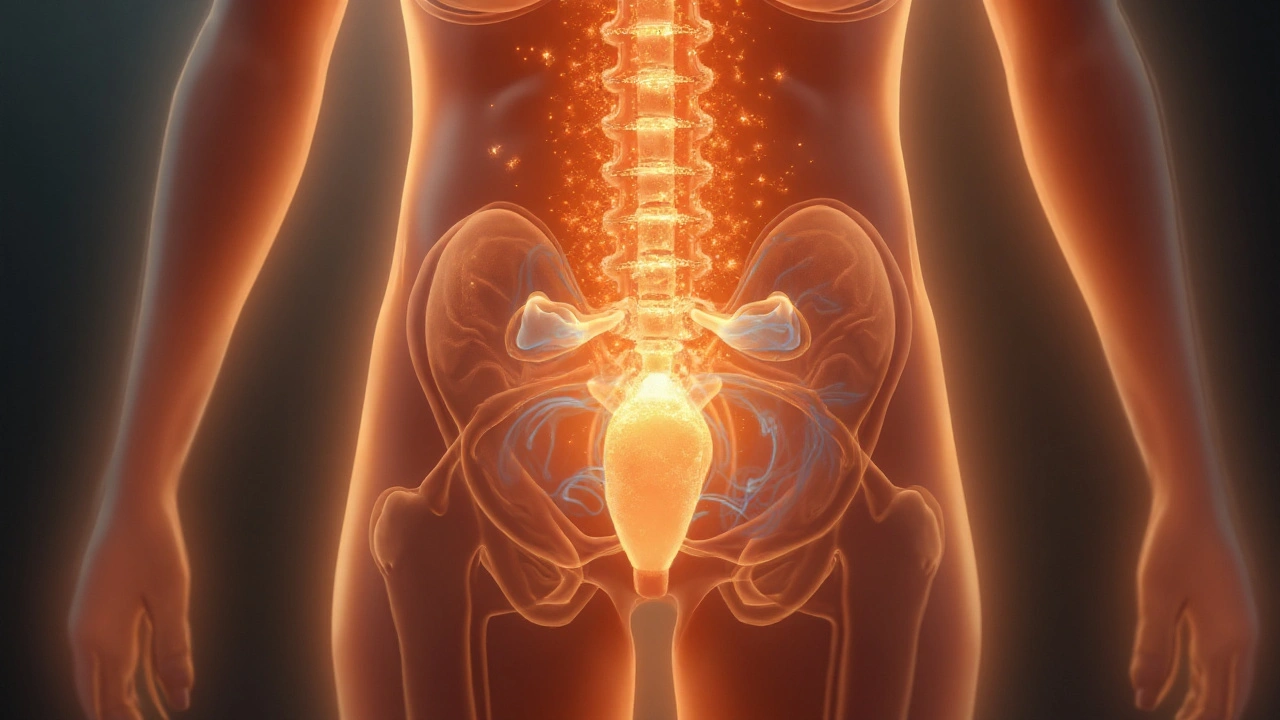
Understanding Bladder and Urinary Tract Muscle Spasms in Multiple Sclerosis
Explore why muscle spasms in the bladder and urinary tract happen in multiple sclerosis, how they’re diagnosed, and the most effective treatment options.
25 Sep 2025If you have multiple sclerosis (MS), you might notice sudden urges to pee, leakage, or a feeling that your bladder won’t empty fully. Those are bladder spasms, a common problem when the nerves that control the bladder get damaged. They can be frustrating, but knowing the why and how can make them much easier to handle.
MS attacks the protective coating (myelin) around nerves. When the nerves that tell your bladder when to store or release urine are affected, the bladder can start to contract on its own – that’s a spasm. The brain‑bladder connection gets fuzzy, so the bladder may overreact to a small amount of urine, creating urgency or leakage. Factors like heat, stress, caffeine, and certain medications can make the nerves even more irritable, raising the chance of a spasm.
First, keep a bladder diary. Note when a spasm hits, what you ate, your stress level, and any meds you took. Patterns pop up fast and help you and your doctor decide what to adjust. Second, watch your fluid intake. Too much caffeine, alcohol, or carbonated drinks can tickle the bladder nerves. Try water, herbal teas, or low‑sugar drinks and see if the spasms calm down.
Pelvic floor exercises (often called Kegels) are a game‑changer. Tightening the muscles that support the bladder can give you more control during a sudden urge. Start slow: squeeze for three seconds, relax for three, repeat ten times a day. Over time, you’ll notice the urge becomes less intense.
If lifestyle tweaks aren’t enough, talk to your neurologist or urologist about medication. Anticholinergics, like oxybutynin, can relax the bladder muscles, while beta‑3 agonists (mirabegron) help the bladder store more urine without spasming. Some people find that Botox injections into the bladder wall reduce overactive signals for months at a time.
Another easy tip is timed voiding. Set a reminder to use the bathroom every two to three hours, even if you don’t feel an urge. This trains the bladder to empty on schedule and can cut down on surprise spasms. When you do feel a sudden urge, try the “stop‑start” method: pause for a few seconds, then try again. This can break the spasm cycle.
Stress management matters too. Simple breathing exercises, short walks, or mindfulness apps can keep the nervous system calmer, which often translates to fewer bladder surprises. If you notice a flare‑up after a stressful event, it’s a clue that nerves are reacting to more than just MS.
Finally, keep an open line with your healthcare team. They can run tests like urodynamics to see exactly how your bladder is behaving and suggest tailored treatments. Don’t hesitate to bring up any new symptoms – early tweaks can prevent bigger problems later.
Bladder spasms in MS are annoying, but they’re not unbeatable. With a mix of tracking, diet tweaks, exercises, timed voiding, and the right meds, you can take back control and feel more comfortable day to day.

Explore why muscle spasms in the bladder and urinary tract happen in multiple sclerosis, how they’re diagnosed, and the most effective treatment options.
25 Sep 2025